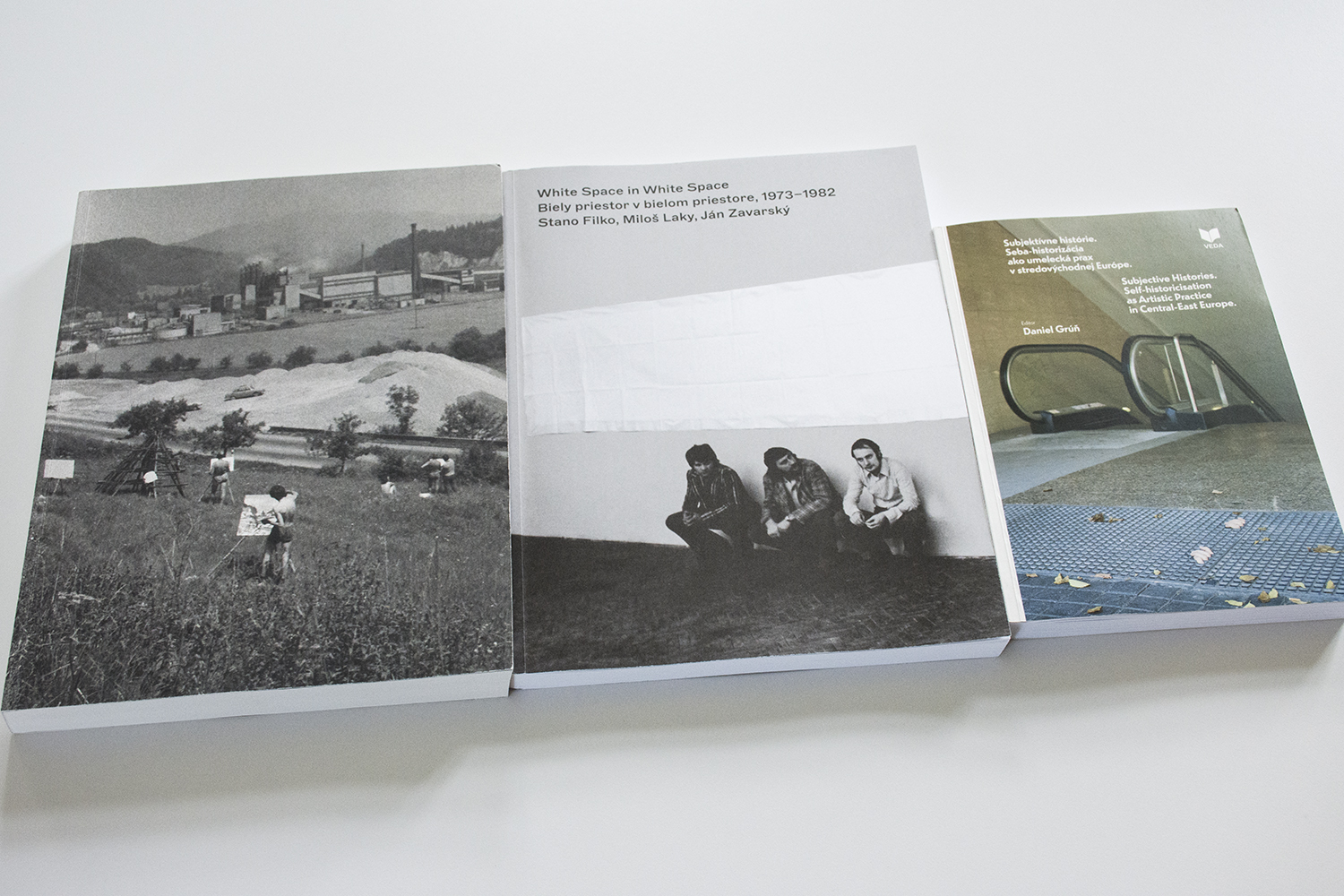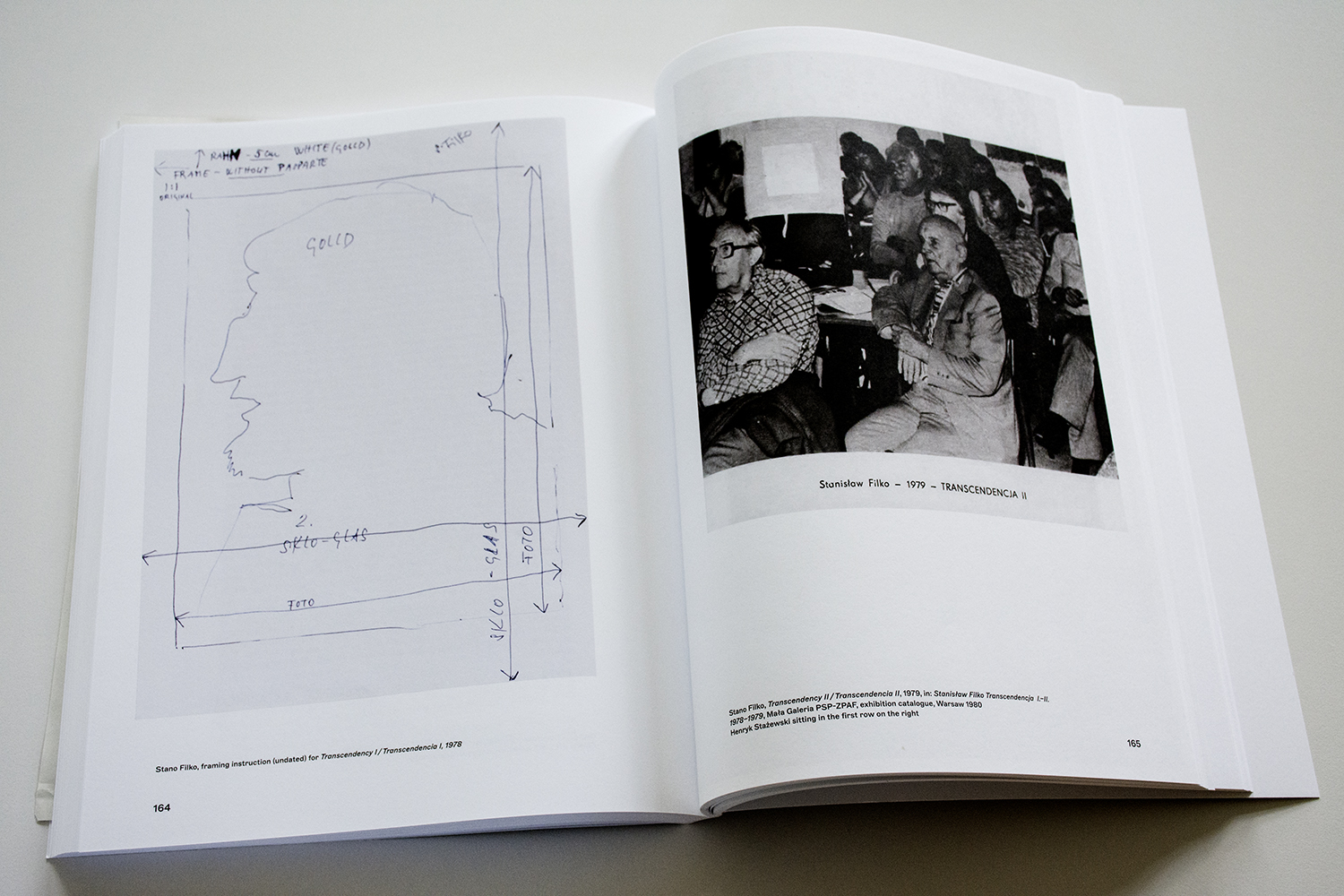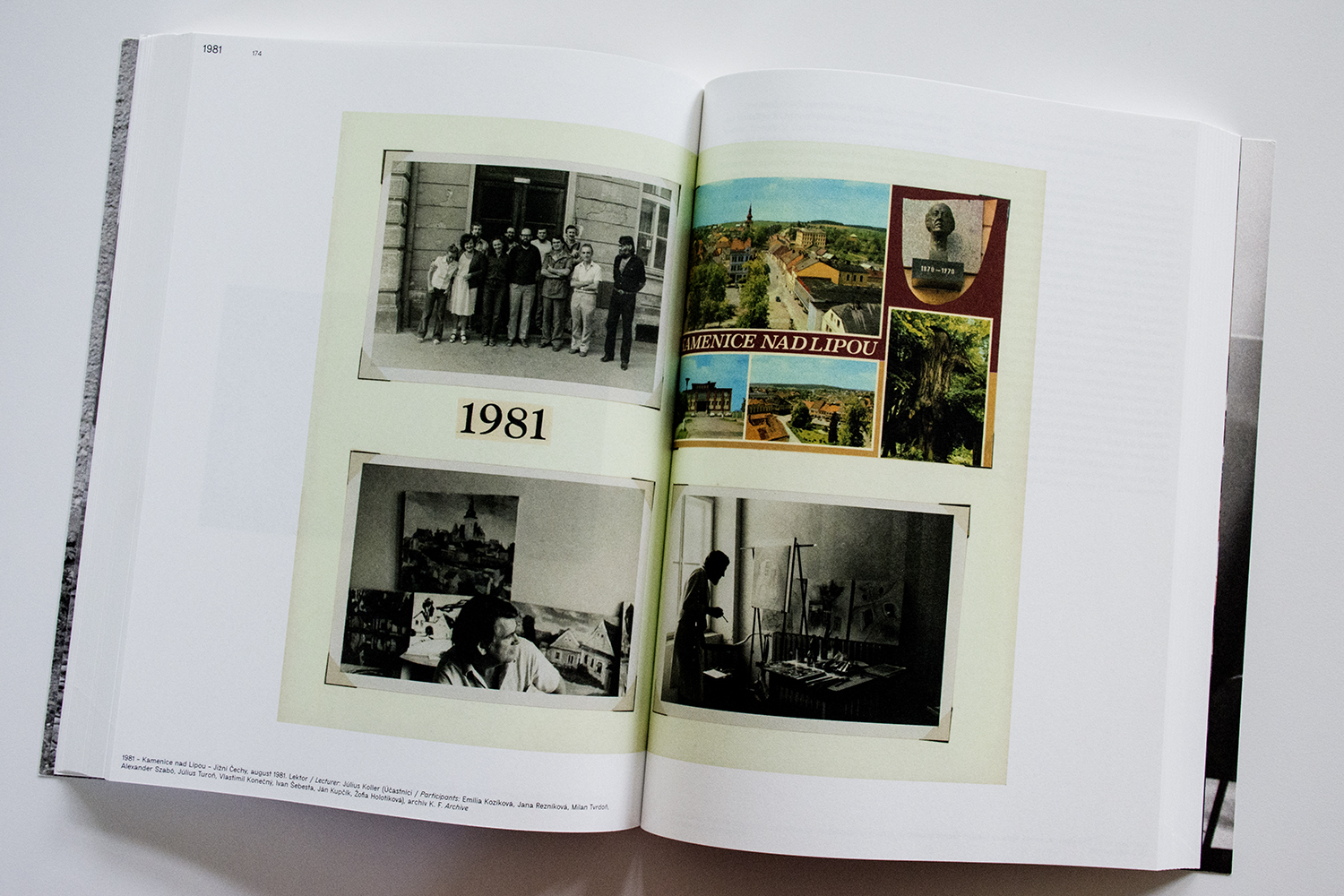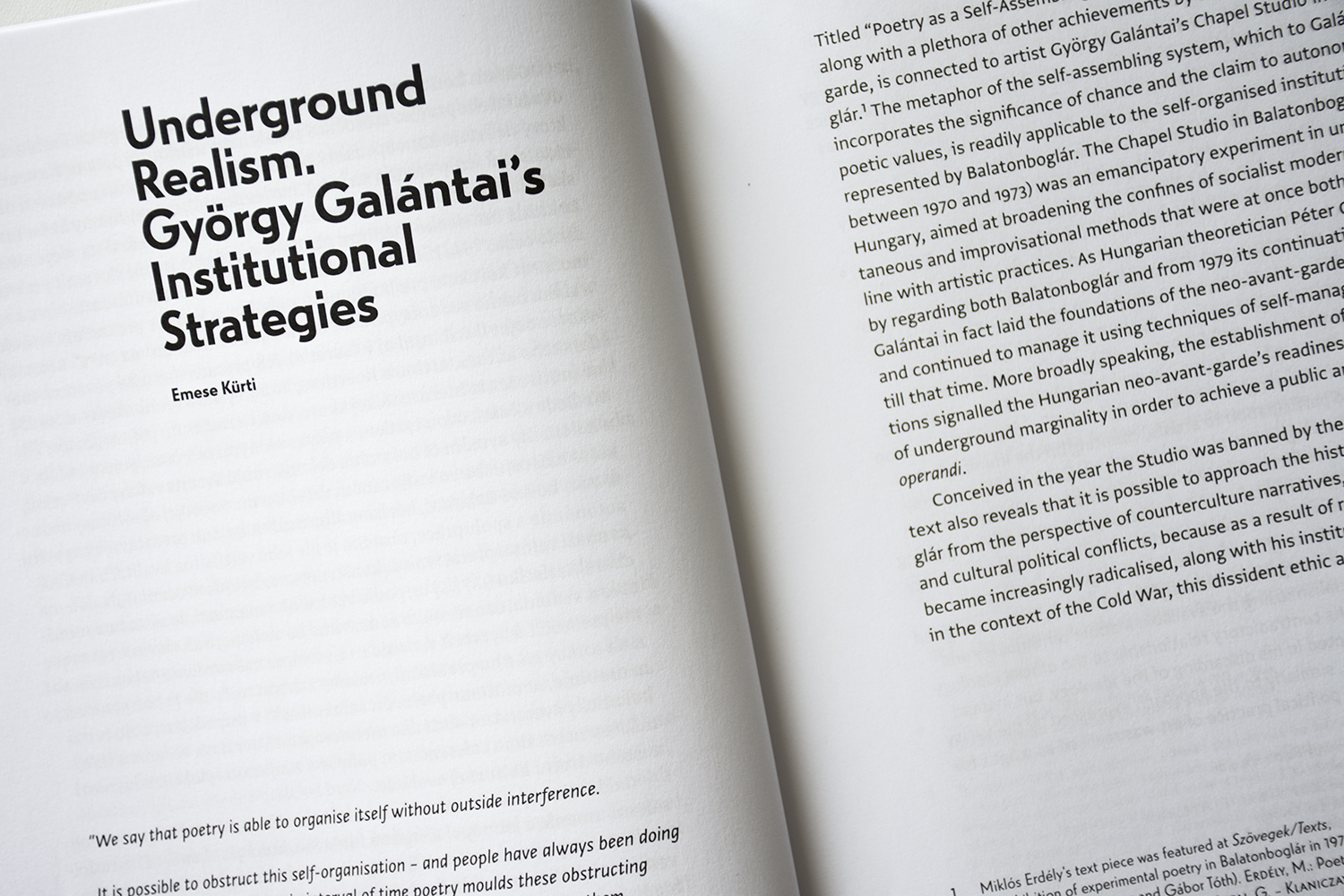We have received three new publications which represent current tendencies of Slovak and regional art history writing, such as exhibition history, artistic self-historicization, and the relations between art and education.

White Space in White Space
This is a publication about the project with same title, White Space in White Space, realized by Stano Filko, initially in collaboration with Miloš Laky and Ján Zavarský, which, in 1977, was also presented at the Young Artists’ Club in Budapest. This book is the second instalment in the Erste Stiftung Kontakt Collection series, which, in this case, is centered around an exhibition series not an artwork.
The first show took place in Brno in 1973 on a day when the gallery was closed and only a few acquaintances could see the exhibition. In the following years, the documentation of the secret exhibition and the recycled elements of the installation were already disseminated in international circles and venues. It became an emblematic example of the Eastern European neo-avant-garde as a dematerialized and transcendent DIY project, which simultaneously strove for international recognition and was repeatedly re-interpreted in the process of artistic self-historicization.

The remarkable achievement of the book is that in addition to the complete documentation of the exhibition series and an interview with Ján Zavarský, the project's transnational reception is also presented through both historical texts (László Beke, Grzegorz Sztabiński, Jerko Ješa Denegri) and the newly commissioned studies (Noit Banai, Lisa Grünwald) by Slovak and international authors.
WHITE SPACE IN WHITE SPACE / BIELY PRIESTOR V BIELOM PRIESTORE: Stano Filko, Miloš Laky, Ján Zavarský. 1973−1982. Ed. Daniel Grúň, Christian Höller, Kathrin Rhomberg. Vienna, Schlebrugge.Editor – Kontakt Collection, 2021. 228 pp.
AMA
The bilingual book AMA: L'ubomír Durček, Kveta Fulierova, Július Koller and Amateur Artists presents the comprehensive documentation of the amateur art courses that Durček, Fulierove and Koller conducted together between 1968 and 1998.

It is worth comparing these amateur artist colonies with the pedagogical practice of Miklós Erdély and Dóra Maurer. The leaders of these courses were participating in international conceptualism (especially Koller and Durček), but they did not want to make avant-garde artists from the amateurs, instead they framed the situation of the amateur artist colony in a conceptual or performative way.
This publication, which is closer to the genre of the artist book, aims not so much at a historical reconstruction but gives an insight into the documents of their pedagogical activity, the archive created from them, and the exciting transitions between the artistic and pedagogical practices of these artists. Although Koller is the most famous and recognized of the three, the publication seeks to focus on their collective activity.
AMA: L'ubomír Durček, Kveta Fulierova, Július Koller and Amateur Artists. Ed. Daniel Grúň. Vienna, Schlebrugge.Editor, 2020. 352 pp.
Subjective Histories
The third, also bilingual, book, Subjective Histories: Self-historicization as Artistic Practice in Central-East Europe is an collection of international papers, in which ten authors—researchers of the art scenes of Slovakia, Hungary, Czech Republic, Romania and former Yugoslavia, including Emese Kürti, the head of Artpool—present case studies of artistic self-historicization, self-archiving, and self-institutionalization.

These alternative cultural practices not only formulated the criticism of the public institutions operating in the state socialist countries of the region, and filled in their deficiencies, but also created parallel institutions. At the same time, the volume focuses on the connections between narrative and artistic practices that underpin artist archives rather than the ways in which they might be opposed.
Subjective Histories: Self-historicization as Artistic Practice in Central-East Europe. Ed. Daniel Grúň. Bratislava, VEDA SAV, 2020. 320 pp.